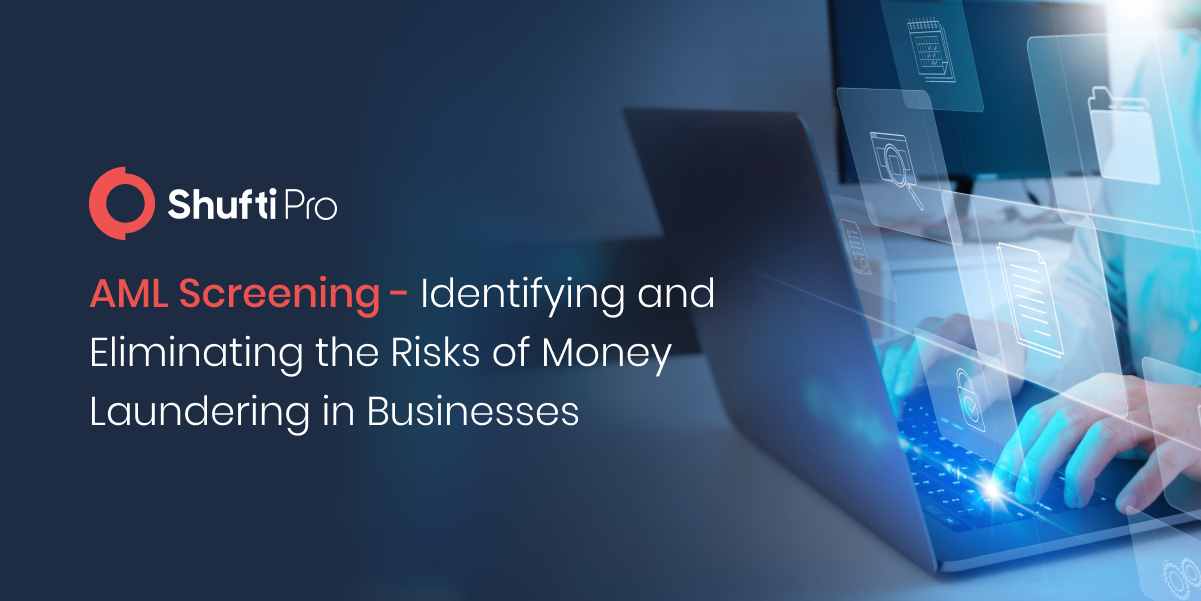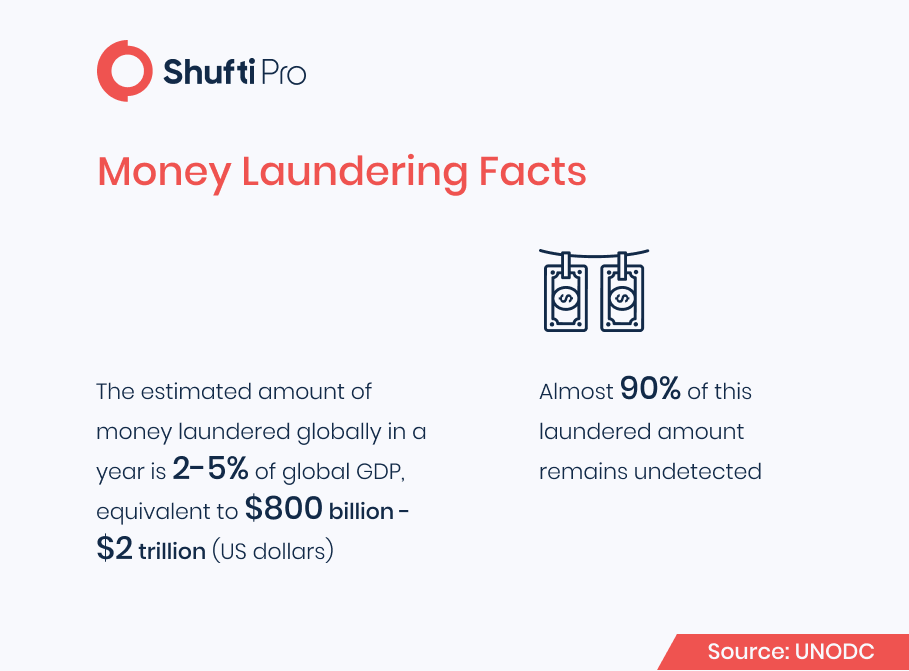AML Screening – Identifying and Eliminating the Risks of Money Laundering in Businesses

Eliminating the risks of financial crime in businesses has never been easy and has been identified has as one of the major challenges by the Financial Action Task Force. Not only is de-risking an issue, but it also results in financial institutions getting unintentionally involved in fraudulent activities as well as money laundering.
Financial institutions that implement de-risking measures follow a route where their relationships with clients and collaborations with businesses are restricted or completely ended. This is because those clients or entities are identified to have certain risks associated with them, which can put financial institutions into trouble.
Why De-risking is a Problem for Financial Institutions
In the Financial Action Task Force (FATF) plenary of 2014, one of the conclusive notes stated that “what is not in line with the FATF standards is the wholesale cutting loose of entire classes of customer, without taking into account, seriously and comprehensively, their level of risk or risk mitigation measures for individual customers within a particular sector”.
In 2015, the FATF maintained its stance on de-risking, making it top-priority to assist businesses and financial institutions with detailed guidelines to mitigate risks brought by criminal entities in the form of customers. Breaking the ties with potential customers or existing ones by restricting access to the global financial system is itself a problem for businesses as it pushes clients to adopt the less-regulated routes.
As the collective aim of regulatory watchdogs like the FATF and financial institutions is to eliminate financial crime, finding the balance between good clients and money launderers is a tough task. Financial inclusion is important for banks and investment firms as it enables them to provide equal access to financial services and also allows better monitoring and scrutiny in terms of Anti-money laundering (AML) and Counter-Financing of Terrorism (CFT) measures.
Effects of De-risking on the Caribbean
Developing de-risking strategies is not something that is limited to just some areas and jurisdictions – it is the need of the hour for every sector in every country. For instance, the Caribbean is one of the most adversely affected areas due to the restriction or termination of Correspondent Banking (CB) collaborations. The Caribbean Financial Action Task Force (CFATF) recently conducted a stock-taking exercise that was designed to shed light on the negative effects of de-risking on the Caribbean and to take forward the FATF’s efforts on it.
Financial institutions in the Caribbean stated that in case of correspondent banking relationships, they had imposed restrictions and even terminated business relationships because of the “elevated perception of risk” associated with them. Cross-border transactions and wire transfers were among the most adversely affected financial services from de-risking. The Caribbean refuses to accept that de-risking is a solution as it holds the opinion that it should not be disconnected from the global financial system.

To overcome the effects of de-risking, financial institutions are actively working towards improving their AML/CFT compliance programs by utilizing guidelines and standards of the FATF. Another key factor is to incorporate AI-based AML screening solutions to ensure compliance with not only local but international regulations.
How the FATF Deals with De-risking
The FATF’s plenary from October 2021 shed light on measures like the revised RBA guidance on Virtual Assets/Virtual Asset Service Providers (VASPs), as well as Beneficial Ownership standards. It also highlighted the efforts related to Environmental Crime and the digital evolution in AML/CFT measures. As it turns out, de-risking looms as a problem for numerous sectors despite the FATF’s consistent examination and mitigation along with issuance of new guidance and best practices.
According to the FATF, “It is difficult to identify a direct correlation between the FATF Standards and de-risking in the financial sector, even though failure to implement the risk-based approach of the FATF Standards at the national level could be one of the many drivers of de-risking”. The results show that even after the initial phase to identify the unwanted consequences of new FATF standards and a the efforts put into mitigating de-risking, there will be another phase. It is assumed that there will be more work done in the second phase to eliminate the adverse affects of de-risking – including best practices, guidance, and employee training.
Europe’s Take on De-risking
The efforts to mitigate de-risking are not limited to countries, as the European Banking Authority (EBA) also addressed de-risking in 2021 using three legal tools. First, it issued its 2021 Opinion on the risks of money laundering and terrorist faced by the EU financial sector. In the Opinion, it stated that de-risking is a looming problem and there needs to be work done by financial authorities.
Furthermore, it was stated in the Opinion that “The EBA notes that derisking continues to pose ML/TF risks, because customers affected by de-risking may resort to alternative payment channels in the EU and elsewhere to meet their financial needs. As a result, transactions may no longer be monitored, making the detection and reporting of suspicious transactions and, ultimately, the prevention of ML/TF more difficult.”
A total of 293 respondents answered the call for input into the 2022 Opinion of the EBA, including 270 who were actually affected by de-risking and 23 who were included in it. In conclusion of the Opinion, it was derived that de-risking was driven by three factors:
- When money laundering and terrorist financing risks are more than expected.
- When there is a lack of understanding regarding customers’ business models.
- When high cost of AML compliance leads businesses to end relationships.
What Shufti Offers
Shufti’s AML screening solution boasts the automated processes that enable businesses to effectively eliminate bad actors and secure their transactions from fraudulent activities and money laundering. The AML screening process starts with identity verification and goes all the way to checking the presence of potential clients on global sanctions lists.
Shufti’s AI-driven AML Screening solution is the ideal tool for financial institutions to identify bad actors and avoid becoming part of money laundering activities. Shufti’s identity verification system meets PCI DSS standards that assist financial institutions in remaining compliant with the regulations. Offering services in 230+ countries and territories, AI-powered AML solution protects data security and makes cross-border transactions secure.
Want to learn more about AML Compliance for your business?










